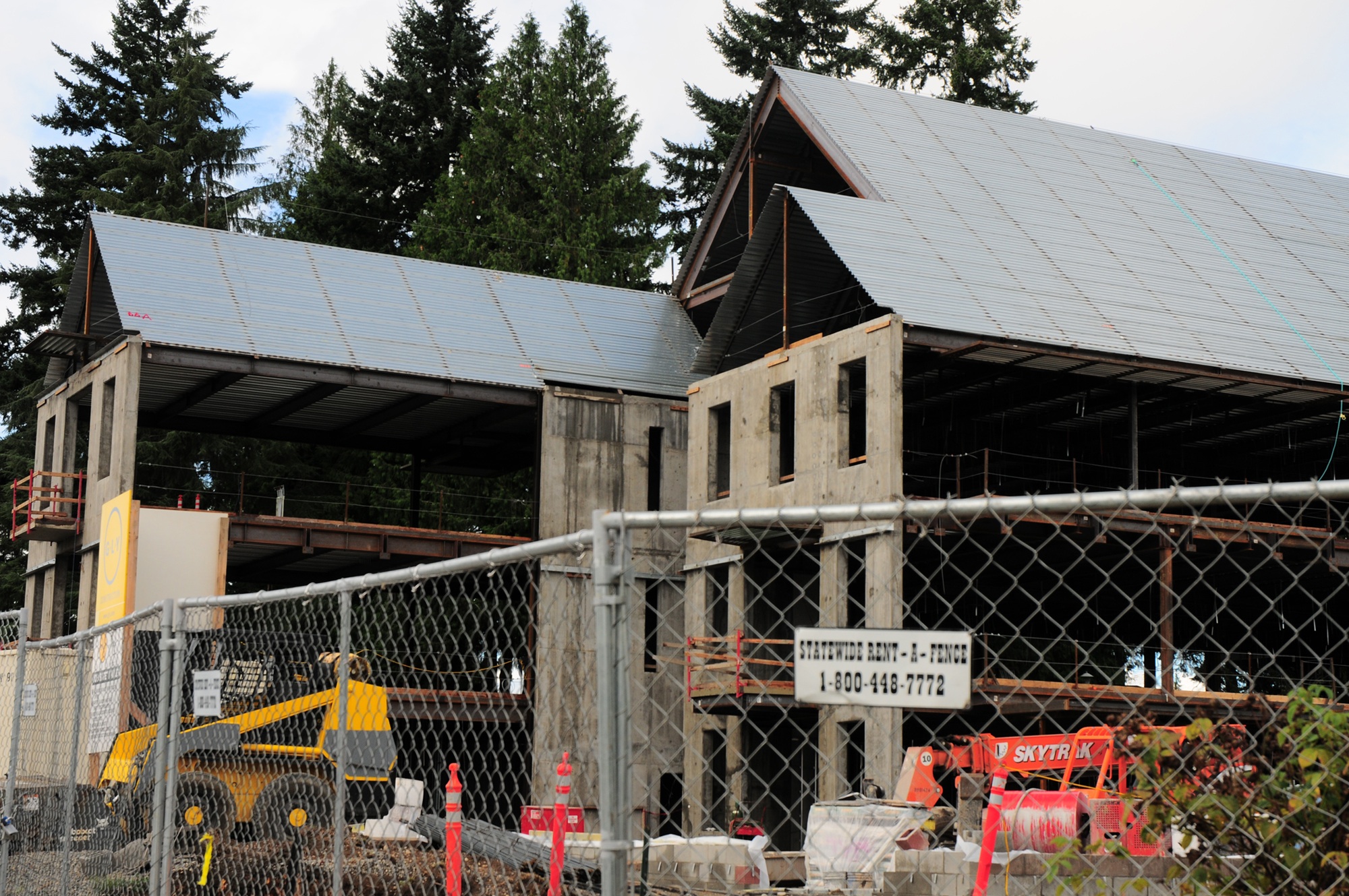
As the sounds of construction ring across the south end of campus, it becomes clear that development is well underway at UPS. Slowly but surely the new Center for Health Sciences rises from what was once an underdeveloped, underutilized slice of the University of Puget Sound’s 97-acre grounds. Designed in accordance with LEED Silver Standards, the new center will represent the most recent installment of Puget Sound’s Campus Master Plan, which administrators project to reach completion in 2023. Its modern classrooms and state of the art laboratory facilities will play host to the undergraduate departments of Psychology and Exercise Science as well as graduate programs in the School of Occupational Therapy and the School of Physical Therapy.
The relocation of these departments presents obvious advantages in comparison to their current locations, all of which appear antiquated or scattered. Yet surprisingly, the switch is not necessarily intended to extend their physical capacities. The motivation behind the improvement of the facilities utilized by each of these programs in fact seeks to promote interdisciplinary contact between these surprisingly similar sciences. For example, on the surface Psychology and Exercise Science could not seem more different. But upon closer examination, similarities emerge: both fields require lab spaces that facilitate the exploration of the senses and study the human body whether it be in terms of the mind, physiology or behavior. The union of these departments will promote collaboration and attract talented professors and researchers while pushing the university to the forefront of neuroscience studies, a growing field of great relevance to all four programs that will give students an edge in their future pursuit of professional positions and advanced degrees.
Professor Robin Foster, professor of psychology and the co-director of Puget Sound’s neuroscience program, has been working closely with the administration on the planning and development of the Center for Health Sciences. As a representative on the Steering Committee, Foster both represents the interests of the psych department and serves as a “voice of the faculty,” acting as a liaison between staff and administrators in order to ensure that everyone’s opinion is heard. “This [psychology] department has been in the basement of Howarth for a while and hasn’t been able to expand,” Foster explained. “Psychology is a lab/experimental-based science and we currently don’t have enough facilities for research, but these new cutting-edge and superiorly designed spaces will provide flexibility and promote co-curricular collaboration.”
Though she voiced her slight disappointment that the move will not significantly increase the physical size and capacity of the involved departments, Foster, along with other departmental consultants, solved this problem by focusing on shared spaces. Unlike the science departments housed in Harned Hall and Thompson Hall, which each have their own copy, study and common rooms, the Center will embrace spaces that can accommodate the shared needs of each health science. “These departments have common layers of shared interest,” Foster noted, citing as her example the new wet-lab which will provide research space for Psychology, Exercise Science and Neuroscience.
One might assume that issues of allocating space and resources between departments would be an area of contention, yet sources proclaim the opposite. Doctor Heidi Orloff, professor of Exercise Science and the department’s consultant on the Steering Committee, noted that interdepartmental cooperation has been emphasized since inception: “Everyone is benefiting from the construction. We’re looking forward to sharing ideas and space and hope that the concentration of health sciences will lead to productive collaboration.”
Exercise Science arguably benefits the most from the move as currently the department finds itself scattered across campus, holding offices in the music building and its one lab, shared by four professors, in the field house. When asked how her department influenced the design process, Orloff highlighted the amount of research and the numerous visits to laboratories across the northwest in pursuit of the most advanced configurations and equipment. “We’re trying hard to make sure that there is input from our department now in order to avoid problems in the future.” All this research seems to have paid off, as the Center for Health Sciences boasts one of the most sophisticated motion analysis and biomechanics labs in the northwest (the labs from which it draws many specifications remain confidential).
Though the Center for Health Sciences will finally allow for the modernization of the programs involved, it is not the first attempt at creating a new home for these fields. During the construction of Harned and the renovation of Thompson, several of these departments were expected to expand into the new buildings but were ‘kicked out’ of negotiations. As a result, many spaces in Harned that have been allocated to the natural sciences remain underused. This attitude of synergy and collaboration emphasized by the Steering Committee seeks to create a space that utilizes resources efficiently while reining in excessive spending. Nevertheless, the Center for Health Sciences will promote the University of Puget Sound’s goal of academic excellence and act as an impetus for development, producing advantaged graduates and attracting brilliant minds in these interrelated fields of study.
